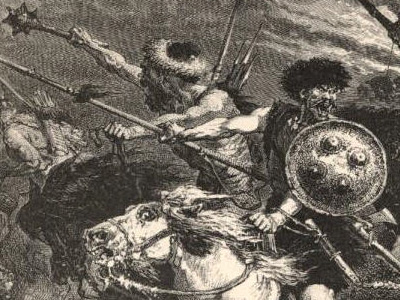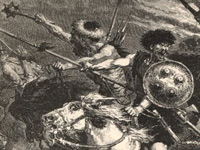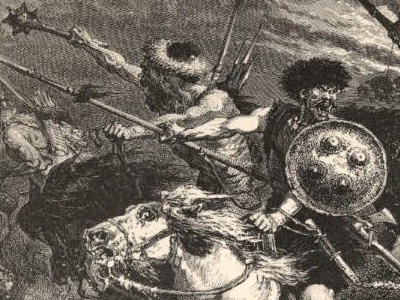Battle of Châlons (451 AD)

Aftermath and Reputation of the Battle
Gibbon succinctly states:
Attila's retreat across the Rhine confessed the last victory which was achieved in the name of the Western Roman Empire.
The following year, Attila renewed his claims to Honoria and territory in the Western Roman Empire. Leading his troops across the Alps and into Northern Italy, he conquered the cities of Aquileia, Vicetia, Verona, Brixia, Bergomum and Milan. Finally, at the very gates of Rome, he turned his army back only after negotiating with the pope.
Another reason the ferocity of this campaign left a deep impression upon its contemporaries is that not only did Attila savage much of Europe in a manner unrepeated for centuries, but the battle acquired a reputation for carnage almost immediately. Considering the extravagant totals for casualties, Gibbon remarked that they "suppose a real and effective loss, sufficient to justify the historian's remark that whole generations may be swept away by the madness of kings in a single hour".
Primary sources immediately note the battle for being exceptionally bloody. Prosper Tiro of Aquitaine states that the battle was a mass slaughter, writing immediately afterwards. The Gallic Chronicle of 452, Jordanes, Hydatius, and the Lex Gundobada all state or indicate the casualties were extreme. Jordanes explicitly states:
For, if we may believe our elders, a brook flowing between low banks through the plain was greatly increased by blood of the slain. It was not flooded by showers, as brooks usually rise, but was swollen by a strange stream and turned into a torrent by the increase of blood. Those whose wounds drove them to slake their parching thirst drank water mingled in gore. In their wretched plight they were forced to drink what they thought was the blood they had poured from their own wounds.
The philosopher Damascius stated that the fighting was so severe "that no one survived except only the leaders on either side and a few followers: but the ghosts of those who fell continued the struggle for three whole days and nights as violently as if they had been alive; the clash of their arms was clearly audible". The Gallic Chronicle of 511 remarks that one participant stated "cadavera vero innumera" or "truly innumerable corpses." The works of Sidonius Apollinaris, Jordanes, Gregory of Tours, and the Chronicle of Fredegar all claimed that it was in the authors' beliefs a mistake to let Attila and his army escape. Tackholm makes note of the evolution of the view of the battle, which goes from being a stalemate in the 5th century, to being hailed as a great victory for the Goths in the 6th as they distorted it to fit their own ethnography.
A further reason for the reputation of this battle is that it was the first major battle since the death of Constantine I where a predominantly Christian force faced a predominantly pagan opponent. This factor was very much apparent to the contemporaries, who often mention prayer playing a factor in this battle (e.g., Gregory of Tours' story of the prayers of Aetius' wife saving the Roman's life in Historia Francorum 2.7).
HISTORY

RESOURCES
This article uses material from the Wikipedia article "Battle of the Catalaunian Plains", which is released under the Creative Commons Attribution-Share-Alike License 3.0.
© Stories Preschool. All Rights Reserved.









